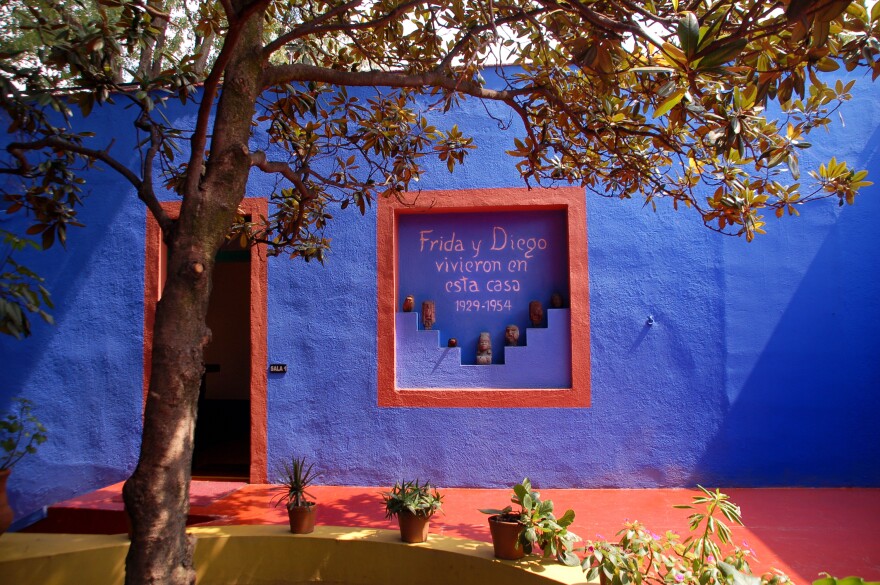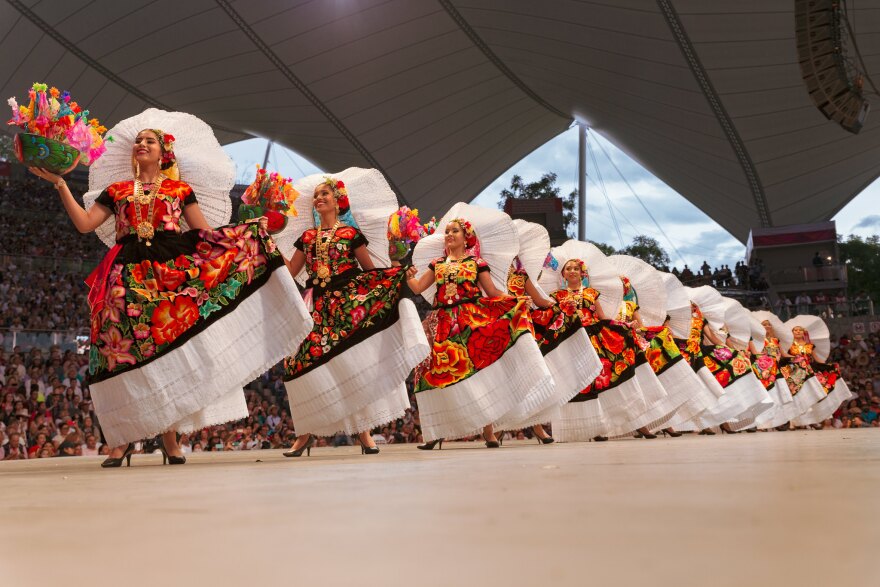The producers of the “Immersive Frida Kahlo” exhibit, which is at Lighthouse Artspace Dallas through April 17, bill it as an exploration of the Mexican artist’s life.
Kahlo’s work is full of autobiographical elements, and that imagery is all over the immersive presentation. While it’s gorgeous to just admire, the show lacks narration to help guide you if you aren’t privy to the details of Kahlo’s life.
So, here are some meaningful images you may spot during your visit to the show:
Buses and trolley cars
At the age of 18, Kahlo was seriously injured during a bus crash. She was impaled by a handrail during the collision with an oncoming streetcar, and she sustained several injuries throughout her body including to her pelvic bone, uterus, spine and feet.
She lived the rest of her life with pain from the injuries, and it became a major theme in Kahlo’s artwork. Imagery of beds, leg braces, plaster corsets and wheelchairs also allude to her lengthy bed rest and lifelong recovery.
Diego Rivera
Kahlo’s relationship with fellow artist Diego Rivera also played a significant role in her work.

She was 22 years old when she married the 42-year-old painter. Kahlo’s parents opposed the union, and her mother famously referred to it as a “marriage between an elephant and a dove.” By that time, Rivera was already one of the most prominent and internationally renowned Mexican artists, and he played a part in Kahlo’s development as an artistic force in Mexico.
Their relationship was an intense one filled with multiple affairs, constant media scrutiny and heartbreak. Kahlo endured multiple miscarriages during their time together. She painted “Henry Ford Hospital” after having a miscarriage when the pair were living in Detroit in the 1930s.
As a final act of devotion, Rivera spearheaded the conversion of Kahlo’s home, the famous Casa Azul in Mexico City, into a museum after her death in 1954.

Exotic pets
Animals are a constant theme in Kahlo’s paintings, and the artist kept many exotic pets in her Mexico City home.
In “Self Portrait with Monkeys,” Kahlo is surrounded by four black, wide-eyed spider monkeys modeled after her own pet monkeys, Fulang Chang and Caimito de Guayabal. Kahlo also had green Amazon parrots, a deer fawn and an eagle.
Another special animal in Kahlo’s repertoire was the Xoloitzcuintle. This gray, hairless dog breed is native to Mexico, and its lineage traces back to pre-Columbian times. Their unique heritage appealed to Kahlo’s exploration of a post-colonial Mexican identity.
Tehuana headdress
In one of Kahlo’s most famous self portraits, the artist is enveloped by an ornate, white headdress that wraps around her entire face. It’s a traditional piece worn by the indigenous women of the Isthmus of Tehuantepec in Oaxaca. The region is famous for being a matriarchal society. Women known as Tehuanas control the economic and social structures in Tehuantepec, which appealed to Kahlo’s feminist ideals.

Huipil tunics
Following her marriage to Rivera, Kahlo began wearing indigenous Mexican clothing to emphasize her heritage. The green and blue huipil seen dangling from a clothes hanger during the show is a traditional tunic worn by indigenous people throughout Mexico and Central America, but there is a variety of colors and designs.
The use of indigenous imagery like the huipil in Kahlo’s paintings was another way to express her anti-colonialist ideals.
Exposed hearts
One of the most prominent images in the immersive show is pulled from “The Two Fridas.” The painting features two versions of Kahlo sitting hand in hand. One version wears a white Victorian-style dress and the other is dressed like the Tehuanas of Oaxaca. They are intertwined by an artery connected to each woman’s exposed heart.
Kahlo painted this work shortly after her divorce from Rivera, and some scholars suggest it is an expression of her loneliness following their separation. The Tehuana version holds a small portrait of Diego, and the other wields medical forceps dripping with blood.
Kahlo often used exposed, anatomical hearts in her work to express the emotional pain she endured during her lifetime.
Skull mask
Another image you’ll definitely spot during the show is a little girl wearing a pink dress and an eerie skull mask. If you glance at her hands, you’ll notice the girl is also holding a marigold. Both the flower and the mask are commonly used during Day of the Dead ceremonies.
A jaguar mask, another relic from the pre-Columbian era, sits on the ground beside the girl.
Symbols of pre-Columbian life are bountiful in Kahlo’s works. During the immersive presentation, you’ll also see scenes of Aztec warriors and ancient plazas. Most of these images are not pulled directly from Kahlo’s work, but the artist did incorporate subtle nods to pre-Columbian civilizations in her paintings.
In “Portrait of Lucha Maria, A Girl from Tehuacan,” Kahlo paints the pyramids located at the ancient site of Teotihuacan near Mexico City.
Got a tip? Email Miguel Perez at mperez@kera.org. You can follow him on Twitter @quillindie.
KERA News is made possible through the generosity of our members. If you find this reporting valuable, consider making a tax-deductible gift today. Thank you.





